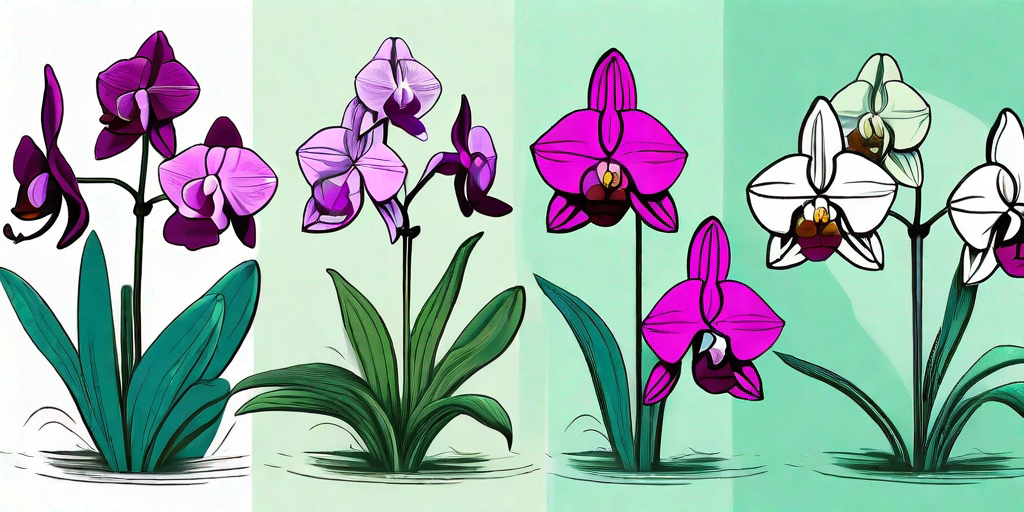
Orchids are the divas of the plant world. They're stunning, exotic, and a bit high maintenance. But, like any diva, they're worth the effort. One of the most important aspects of orchid care is pruning. Proper pruning can lead to a blooming success, while improper pruning can lead to a wilted disaster. So, let's dive into the world of orchid pruning and learn how to keep your diva in the spotlight.
Understanding Orchid Anatomy
Before we get into the nitty-gritty of pruning, it's important to understand the basic anatomy of an orchid. Orchids are unique in their structure, and each part plays a vital role in the plant's health and growth.
The most prominent parts of an orchid are the leaves, roots, and of course, the beautiful flowers. But there are also pseudobulbs, which store water and nutrients, and the rhizome, which connects the pseudobulbs and roots.
The Importance of Leaves
Orchid leaves are more than just pretty green decorations. They're the plant's food factory, using photosynthesis to convert sunlight into energy. Healthy leaves are essential for a blooming orchid.
When pruning, it's important to avoid damaging the leaves. Any cuts or bruises can lead to disease and inhibit the plant's ability to photosynthesize.
Roots and Pseudobulbs
Orchid roots are a bit like the plant's personal plumbing system, transporting water and nutrients from the soil to the rest of the plant. The pseudobulbs act as storage units, holding onto water and nutrients for times of need.
When pruning, it's crucial to be careful with the roots and pseudobulbs. Damaging these can cause the plant to go into shock and may even lead to death.
When to Prune Orchids
Now that we've got a basic understanding of orchid anatomy, let's talk about when to prune. Timing is everything when it comes to pruning orchids. Prune at the wrong time, and you could end up with a sad, flowerless plant.
The best time to prune orchids is after they've finished blooming. This is when the plant is in its dormant phase and can handle the stress of pruning. It's also a good time to remove any dead or diseased parts of the plant.
How to Prune Orchids
Alright, now for the main event: how to prune orchids. This is where the rubber meets the road, or rather, where the shears meet the stem. But fear not, with a little care and patience, you can prune your orchid like a pro.
First, you'll need a pair of sharp, clean pruning shears. It's important to sterilize your shears before and after pruning to prevent the spread of disease. You can do this by wiping them down with rubbing alcohol.
Pruning the Flower Spike
The flower spike is the long stem that the flowers grow on. Once the flowers have fallen off, you can prune the spike to encourage new growth.
Find the node (the small bump) below the lowest flower bloom. Cut the spike about an inch above this node. This will encourage the plant to produce a new spike and more flowers.
Pruning Leaves and Roots
Pruning leaves and roots is a bit more delicate. You only want to remove leaves that are yellow, brown, or otherwise unhealthy. Cut the leaf off at the base, being careful not to damage the pseudobulb.
Root pruning should only be done if the roots are dead or diseased. Healthy roots are firm and green, while unhealthy roots are soft and brown. Cut off the unhealthy roots at the base.
FAQs about Pruning Orchids
Now that we've covered the basics, let's tackle some frequently asked questions about pruning orchids.
Why is my orchid not blooming?
There could be several reasons why your orchid isn't blooming. It could be due to insufficient light, incorrect watering, or lack of nutrients. It could also be that your orchid is in its dormant phase and just needs a little more time.
Can I prune my orchid in the winter?
Yes, you can prune your orchid in the winter, as long as it has finished blooming. In fact, winter is often the best time to prune, as this is when many orchids enter their dormant phase.
How often should I prune my orchid?
Orchids don't need to be pruned very often. In fact, over-pruning can be harmful. Generally, you should only prune your orchid after it has finished blooming and you see signs of dead or diseased parts.
Conclusion
Pruning orchids may seem daunting, but with a little knowledge and care, it can be a rewarding task. Remember, the key to a blooming success is understanding your orchid's anatomy, knowing when to prune, and using the right techniques.
So, don your gardening gloves, grab your shears, and give your orchid the trim it deserves. After all, every diva needs a good haircut now and then.















